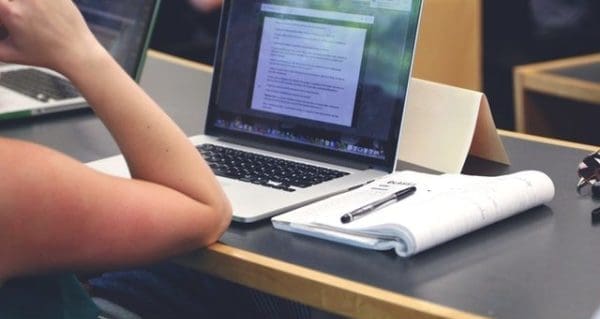 Most teachers and students know the conventional do’s and don’ts of proper studying habits. For example, students should find a quiet environment free of distractions. Don’t play any background music, and don’t let your mind wander. And, above all, don’t stop working when you are making good progress.
Most teachers and students know the conventional do’s and don’ts of proper studying habits. For example, students should find a quiet environment free of distractions. Don’t play any background music, and don’t let your mind wander. And, above all, don’t stop working when you are making good progress.
These do’s and don’ts exist because conventional wisdom has it that distractions are bad for learning. For a long time, this made intuitive sense and fit my notions about proper learning. But then I began to realize something: it didn’t always match my own work habits or my experiences with students.
In fact, I’ve found that I often do my best work when I start and stop frequently. For example, when writing a column, like this one, I will often stop to check Facebook or surf the internet for a few minutes. Then I get up and walk around and mull things over in my mind.
These interruptions happen most frequently when I’m right in the middle of a critical point of my work. And yet somehow I always manage to finish my columns on time and to an appropriate standard. Either I never learned how to work properly or something is wrong with the notion that distractions are always bad.
It turns out that my gradually shifting views about the merits of distraction now have significant scientific support. A new book by New York Times science reporter Benedict Carey does an excellent job of skewering many of the most common misconceptions about learning. How We Learn summarizes the research findings of cognitive psychology and applies them to everyday life.
For example, Carey describes an experiment that compared students who studied for a test in a quiet room versus those who studied with jazz or Mozart playing in the background. Surprisingly, students who studied in the quiet environment did worse on the tests.
Carey suggests that music and other background noises can actually enrich the study environment as students form valuable associations that help them remember the material. Apparently, it is possible for students to study effectively and listen to their iPods at the same time.
Even interruptions may not be as bad as previously thought. Carey describes a major experimental study in which 164 students and teachers were given a series of short tasks to complete. However, instead of letting them proceed without distraction, researchers interrupted the participants at random intervals before they could finish some of their tasks. After the time was up, participants were then asked to list as many of the tasks as they could remember.
Researchers were surprised to discover that participants remembered the interrupted tasks with almost twice the frequency as the uninterrupted tasks. Apparently, something about being interrupted caused participants to remember that task more vividly. This was particularly true when the interruptions took place when participants were most engrossed in the task at hand. In other words, one of the best ways to remember a task is to be interrupted right when you are in the middle of it.
According to Carey, interrupting our work at a critical moment and letting it percolate in our minds can help with the learning process. Carey explains that when we stop in the middle of a difficult problem and do something else for a while, we give our brains the opportunity to ponder it further and look for alternative solutions. So maybe it isn’t the end of the world when a student responds to a text message or walks around the classroom for a moment before moving on to the next math problem.
There is, however, one important caveat. It is one thing for students to briefly distract themselves; it is another thing entirely when they are regularly distracted by the actions of others. Some distractions make it difficult to concentrate and are very bad for learning. As a result, teachers must still remain in control of their classrooms and provide students with a focused learning environment.
A balanced approach is needed. Students deserve a learning environment that is structured and flexible. Some distractions are good for learning while others are not. It’s time to update the standard do’s and don’ts of proper studying to reflect the findings of modern cognitive science.
Michael Zwaagstra is a high school teacher, and co-author What’s Wrong With Our Schools and How We Can Fix Them.
Michael is a Troy Media contributor. Why aren’t you?
The views, opinions and positions expressed by columnists and contributors are the author’s alone. They do not inherently or expressly reflect the views, opinions and/or positions of our publication.


